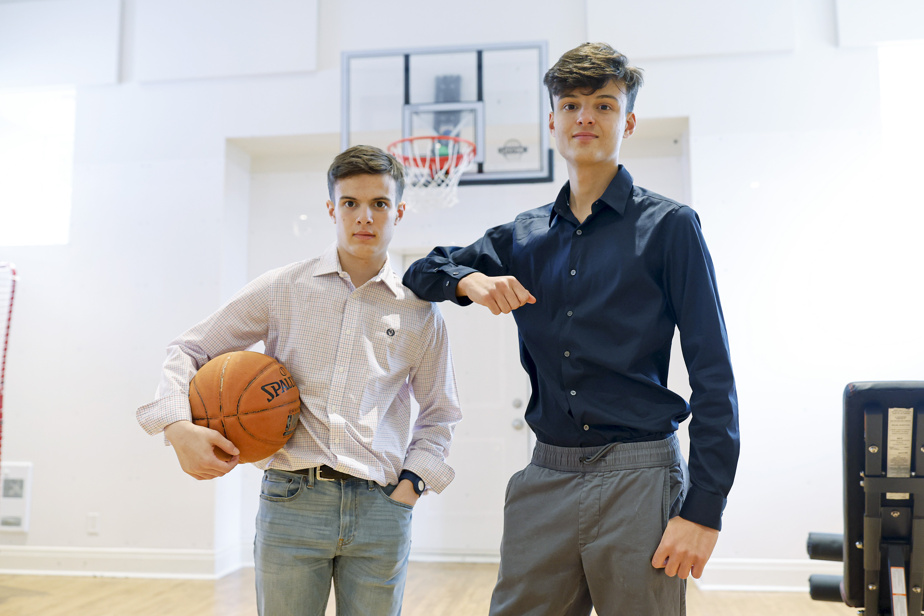Two brothers playing basketball together, doing puzzles or drawing. In many families, these activities are part of ordinary daily life. For some, they might even seem trivial. Not in the eyes of Anthony Antoniou, young author of the children’s book Noah’s big problem.
For the 17-year-old, playing with his brother Constantin has long been anything but child’s play. “I couldn’t really communicate with my brother. It was difficult to be able to play with him, ”recalls Anthony Antoniou about his childhood with his younger brother.
Constantin, 15, has a fairly severe form of autism, says his mother, Johanna Choremis.
“He doesn’t have a conversation. Zero conversation. You can’t ask him, “What did you do today?” “, she gives as an example.
Constantin understands simple instructions and can answer questions about his needs, such as “Are you hungry?” but he speaks very little.
As a child, Anthony Antoniou saw his friends playing with their siblings and he would have liked to do the same. Surely there was a way to do it, he told himself, from the height of his 8 years.
The ball that brings
Inspired by this memory, the teenager wrote the book aimed at children aged 3 and over, Noah’s big problempublished by Bayard editions just in time before World Autism Awareness Day, celebrated this Sunday.
In this charming album illustrated by Baptiste Amsallem, we follow the story of Noah and his autistic brother Gabriel. The eldest offers a host of activities to his younger brother: playing hockey, swimming, doing mimes… Nothing seems to interest Gabriel.
Noah then remembers that his brother is very fond of balloons. What if they capitalized on this strength and played basketball together?
As in the book, it was thanks to a big orange ball that the Antoniou brothers got closer. “Constantin is very, very fond of balls. […] He can spend hours just playing with a ball,” confirms Johanna Choremis. At home, the boys are even lucky enough to have an indoor basketball hoop.
For a good cause
What message does Anthony Antoniou want to convey to children and their parents through the story of Noah and Gabriel?
I would like them to understand that autistic children, even if they have their problems, they are human. It’s not just robots that don’t work. […] We can play with them. We should not exclude them.
Anthony Antoniou, author of the book Noah’s big problem
The young man did not write this book with the aim of becoming an author, but rather with the aim of raising funds for his brother’s school.
The teenager donates all of his royalties to the Giant Steps Foundation, which finances the activities of the school of the same name, whose mission is to offer educational and therapeutic services to young people with a spectrum disorder. autism.
“My brother has always gone to this school. It is a wonderful school. I have volunteered there before. I really liked the atmosphere. The people there are so helpful to families who have an autistic child. […] I thought they were doing a really good job and I wanted to help them”, explains Anthony Antoniou, who is very proud of this project.
The next step ? The Antoniou family dreams that the book will also be published in English in order to sensitize an even larger public to the acceptance of differences.
April is autism month
In Quebec, since 1984, April has been designated as autism month. This year, the Quebec Federation of Autism wishes to make visible the multiple realities experienced by those who have received this diagnosis. Through the portraits of Alexandre, Alice, Taoh and 44 other people, she wants to highlight autistic diversity in order to make people better understand their strengths and their challenges.

Noah’s big problem
Text by Anthony Antoniou, illustrations by Baptiste Amsallem
Bayard Editions
From 3 years old
Learn more
-
- 2%
- Percentage of Canadians aged 1 to 17 who have been diagnosed with autism spectrum disorder, according to 2019 data from Statistics Canada
Source : Canadian Child and Youth Health Survey
- 73%
- Percentage of young Canadians with autism aged 2 to 17 who had difficulty in at least one functional area (for example, communication, acceptance of change or ability to make friends), according to the same source.
Ssource: Canadian Child and Youth Health Survey
